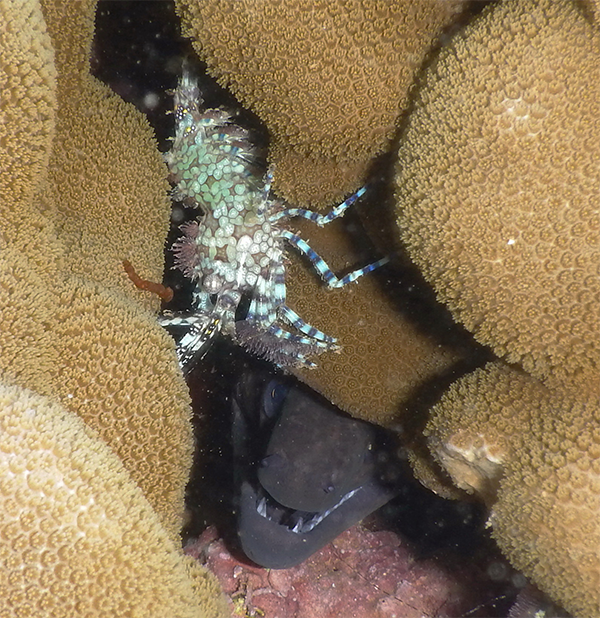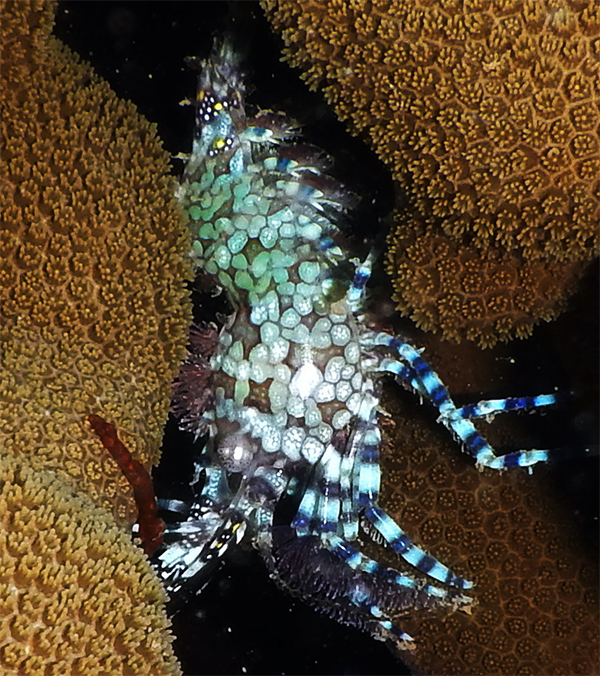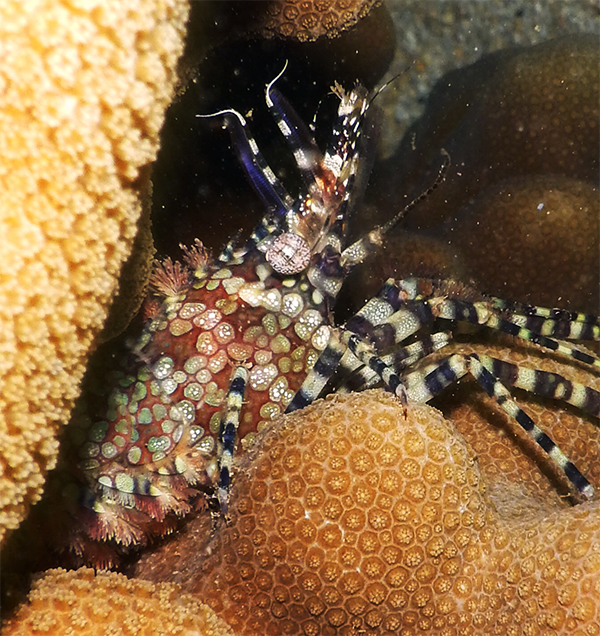Published in the Ocean Watch column, Honolulu Star-Advertiser © Susan Scott
September 28, 2015
To people who fear moray eels: don’t. Unless you accidentally place a hand or foot right in a moray’s mouth, it will nearly always back off. Now I have photographic proof.
 A moray eel is shown here, nestled below a female marbled shrimp.
A moray eel is shown here, nestled below a female marbled shrimp.
The eel failed to bite the unknowing snorkeler who snapped
the picture, even though it easily could have.
©2015 Susan Scott
While snorkeling recently, I found a female marbled shrimp, one of Hawaii’s most fetching marine animals. The species’ 2- to 3-inch-long body is greenish by day, reddish at night and patterned in a stunning mosaic.
And the splendor doesn’t stop there. Purple and white stripes decorate the marbled shrimp’s legs, and bright spots on the antennae and tail shine yellow.
Marbled shrimp are popular in the aquarium trade because they’re hardy as well as beautiful. Due to the hump on the creature’s back, marbled shrimp are also known as camel, buffalo or broken-back shrimp. Some aquarists call them Saron shrimp, Saron being the shrimp’s first scientific name.

The second scientific name, marmoratus, means marbled, a name referring to the color mix.
Marbled shrimp are common, but we don’t see them often because they hide during the day. At night these walking impressionist paintings roam the reef, eating plants and animals dead or alive.
I knew my shrimp was a female because females’ front pair of legs and bodies contain furry bristles, sometimes so dense the shrimp look like they’re carrying tiny brushes. Years ago while diving with John Hoover, author of several marine animal guides, we came across a dozen of these woolly creatures. “I don’t know their real name,” he told me later, “but I call them Fuller Brush shrimp.”
Male and female marbled shrimp look so different from one another that for years I thought they were two species.
Males never wear fur coats and have a pair of ridiculously long, claw-tipped legs, reminiscent of knights’ jousting sticks. The males use those legs for the same purpose: to fight each other from a distance.

I was thrilled when I found a large female marbled shrimp posing on a coral head in the early morning light. Holding my breath, I lowered my face and camera to the shrimp by hanging onto the underside of the coral rock below it. The shrimp held still for half a dozen shots before she retreated.
Back home I downloaded my pictures — and my eyes nearly popped out of my head. Unknown to me, my darling shrimp had been on the upper lanai of a coral townhouse. So focused was I on the shrimp that I never saw its downstairs neighbor, a yellow margin moray.
I thank the Fuller Brush shrimp for modeling that day and the moray for, amazingly, not biting when my hand was virtually in its mouth. The unlikely pair gave me one of my favorite pictures.